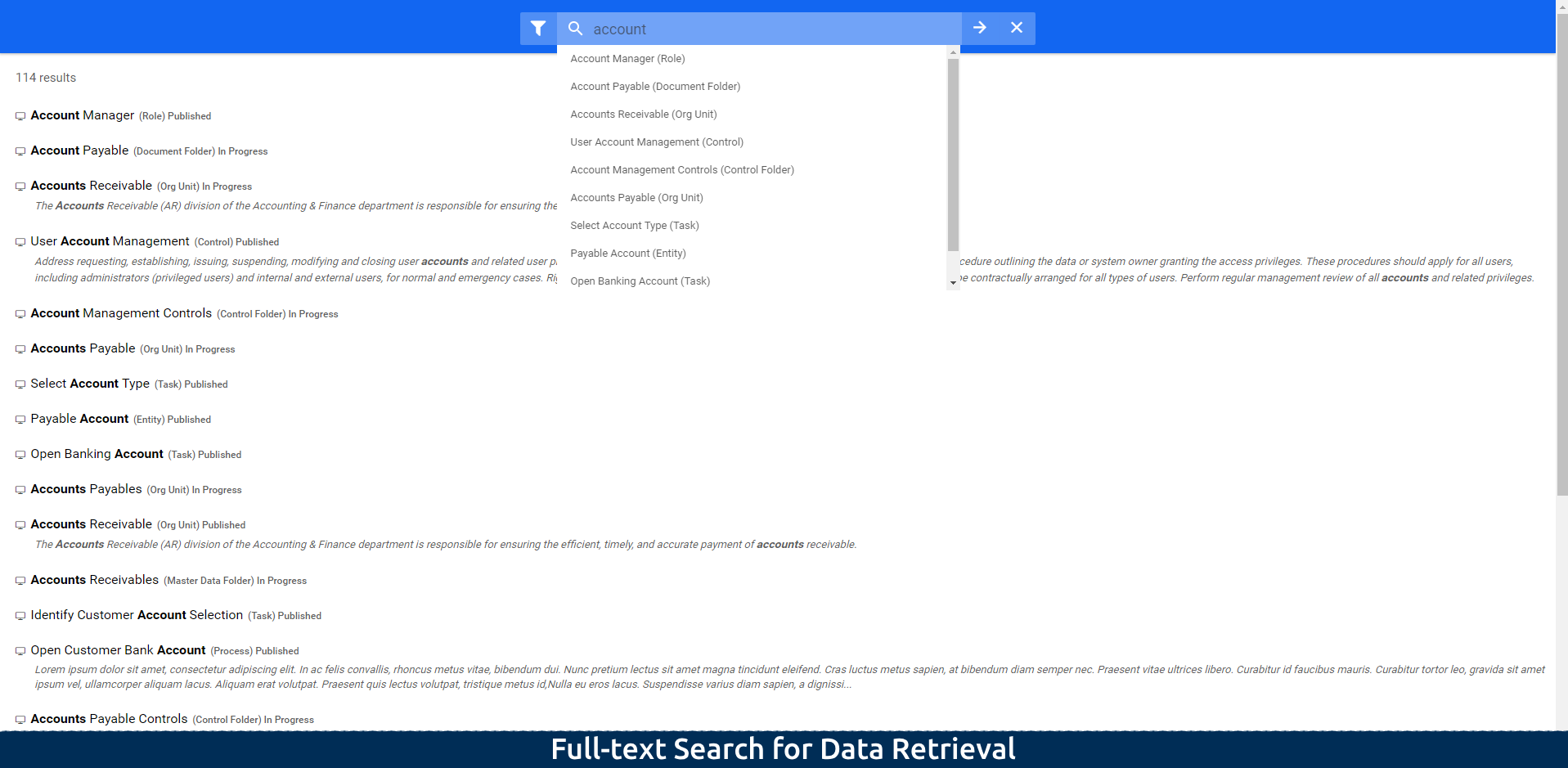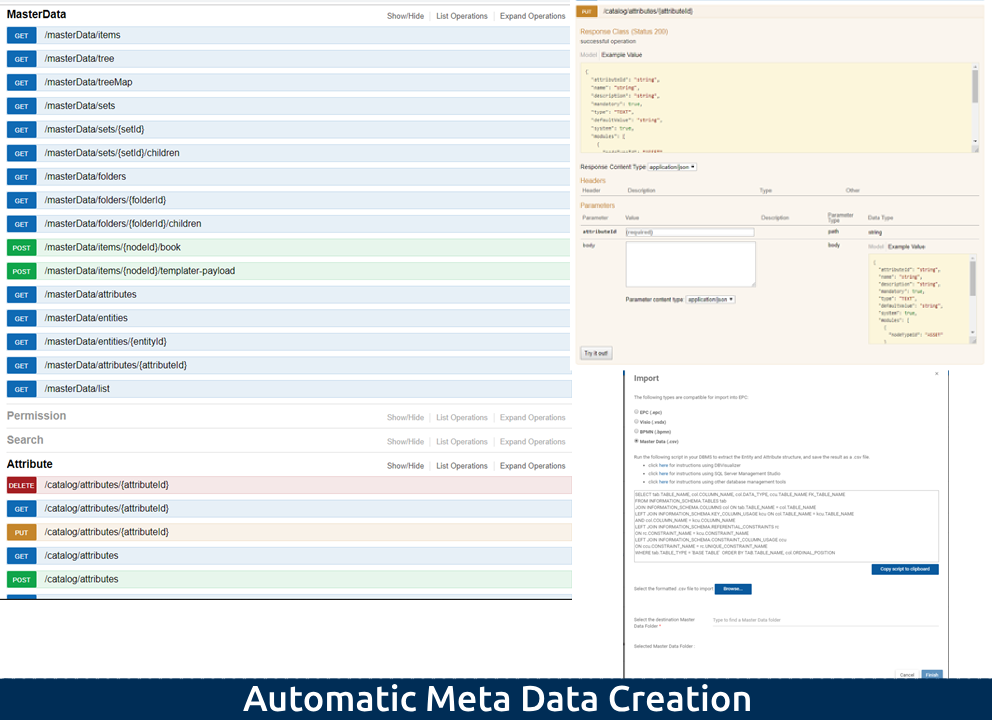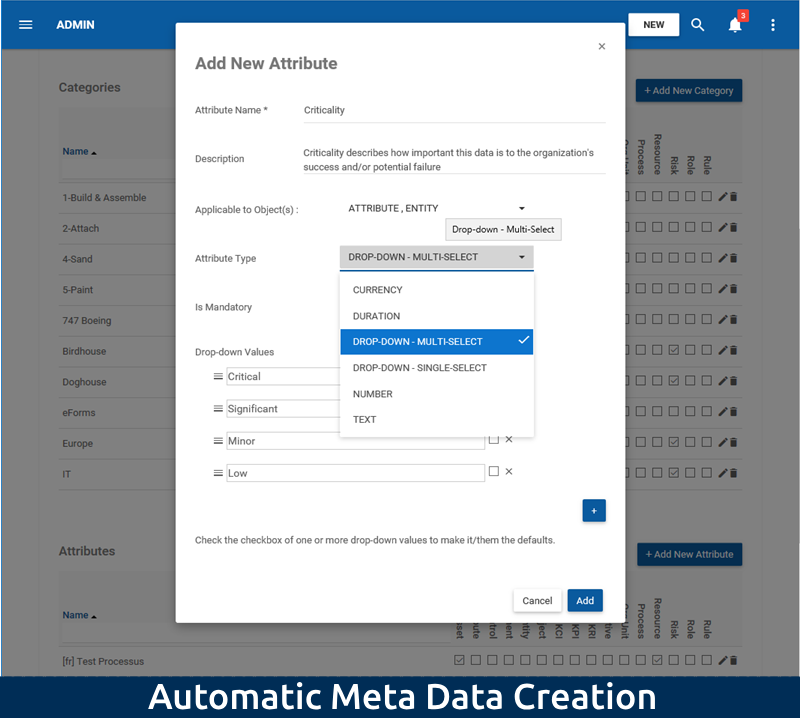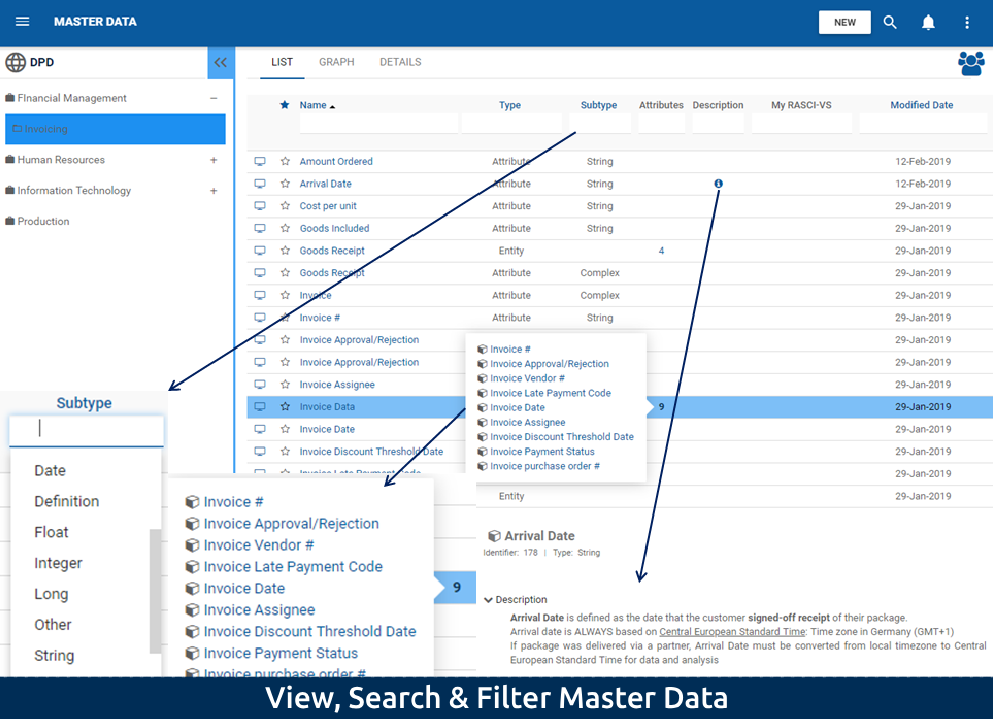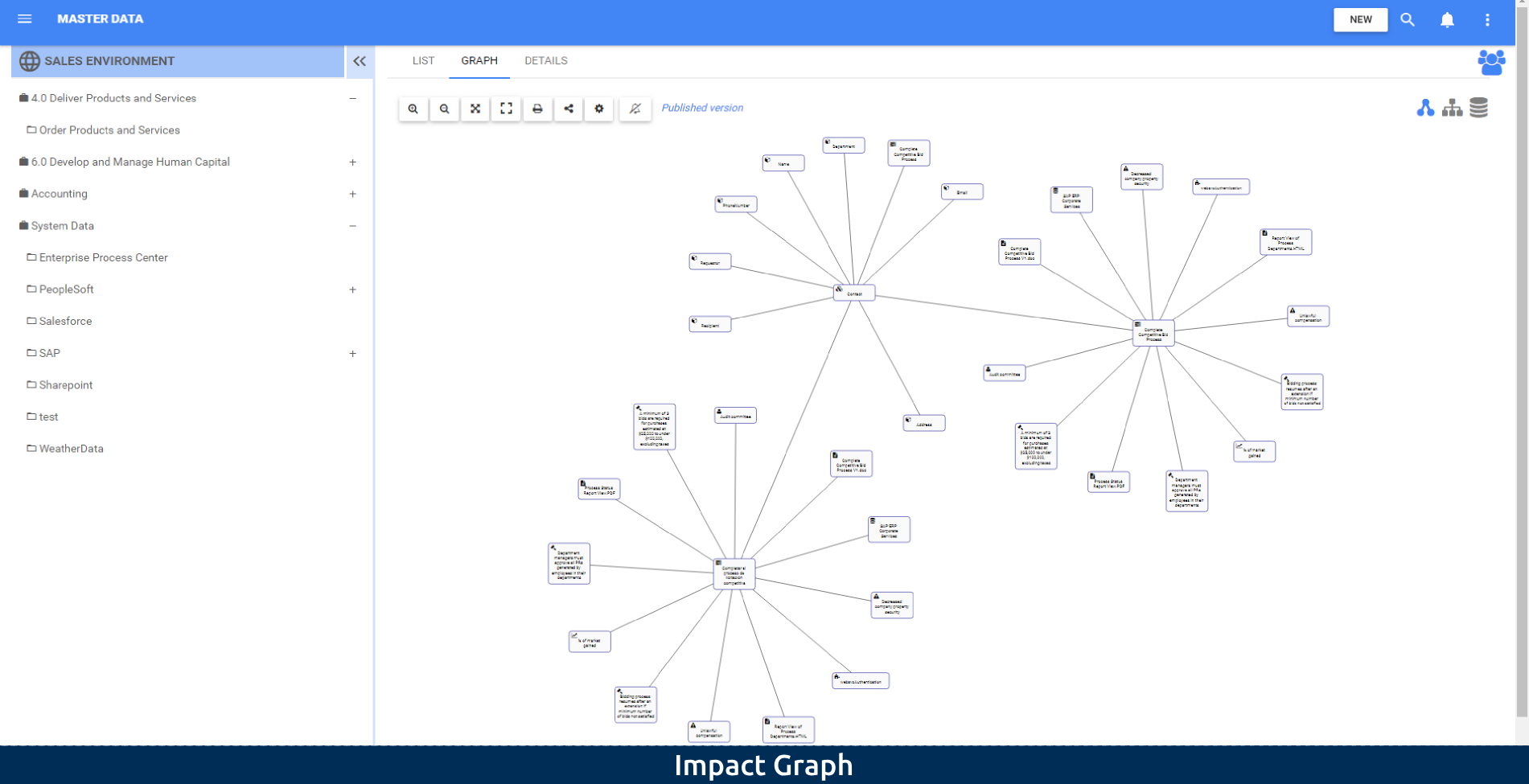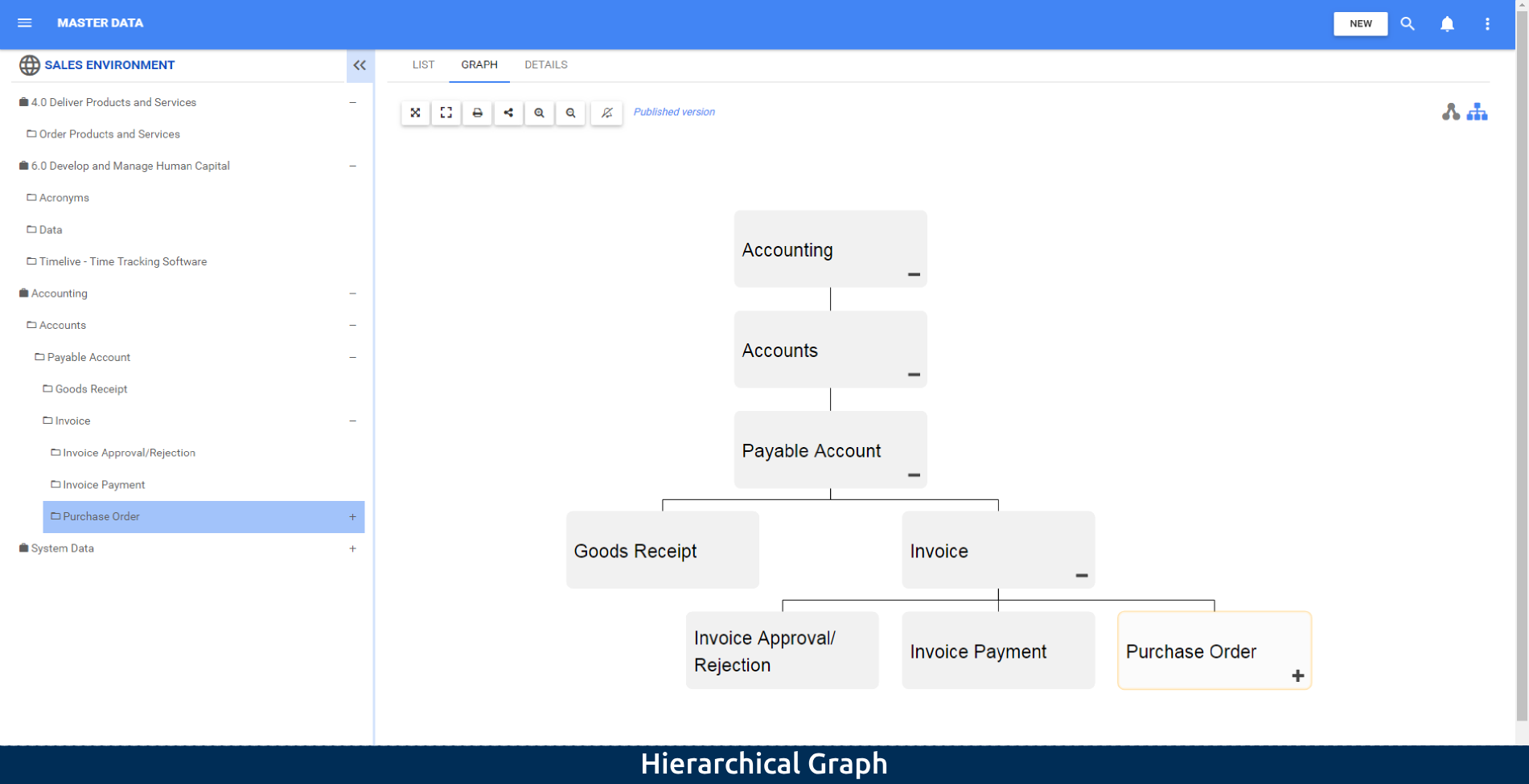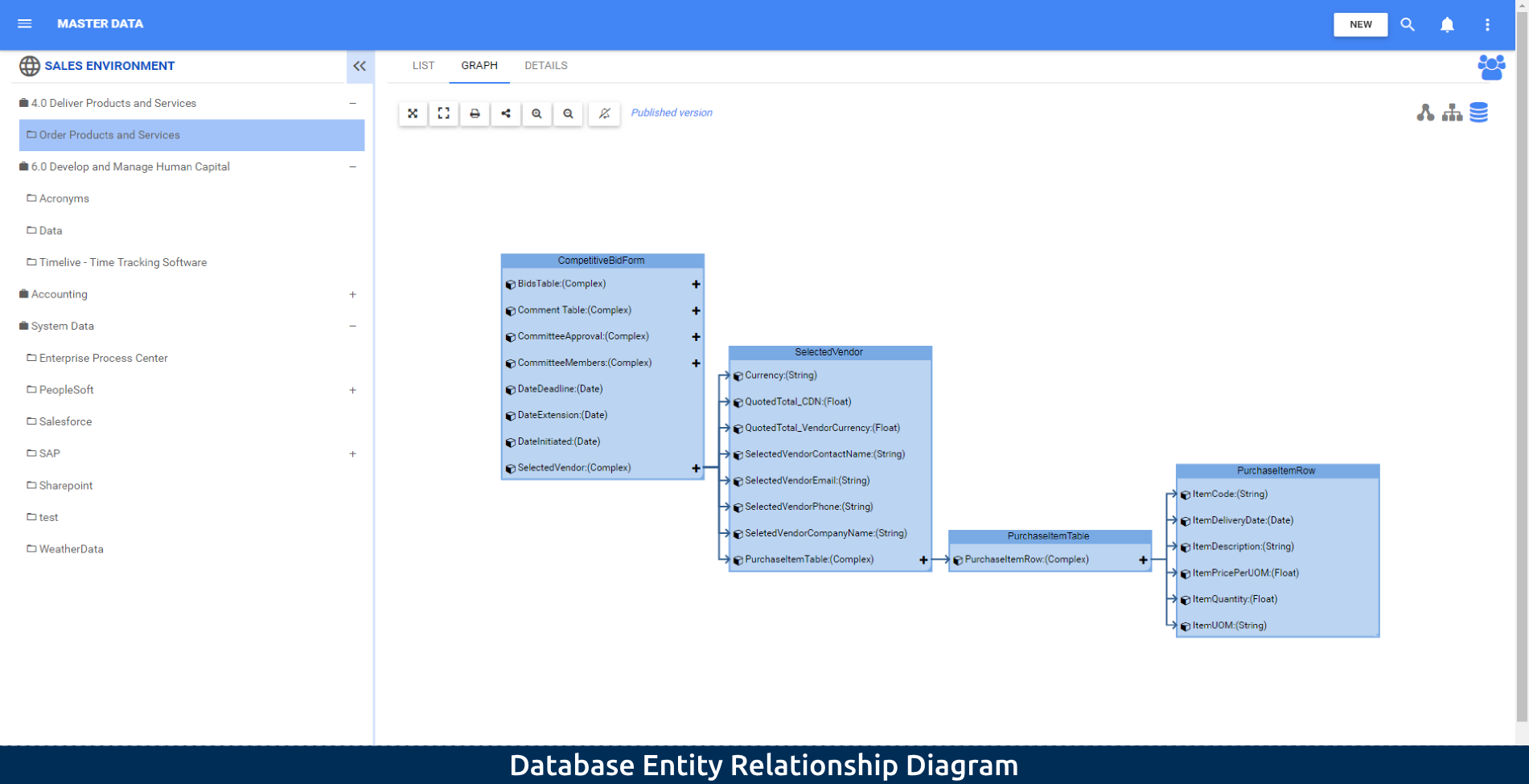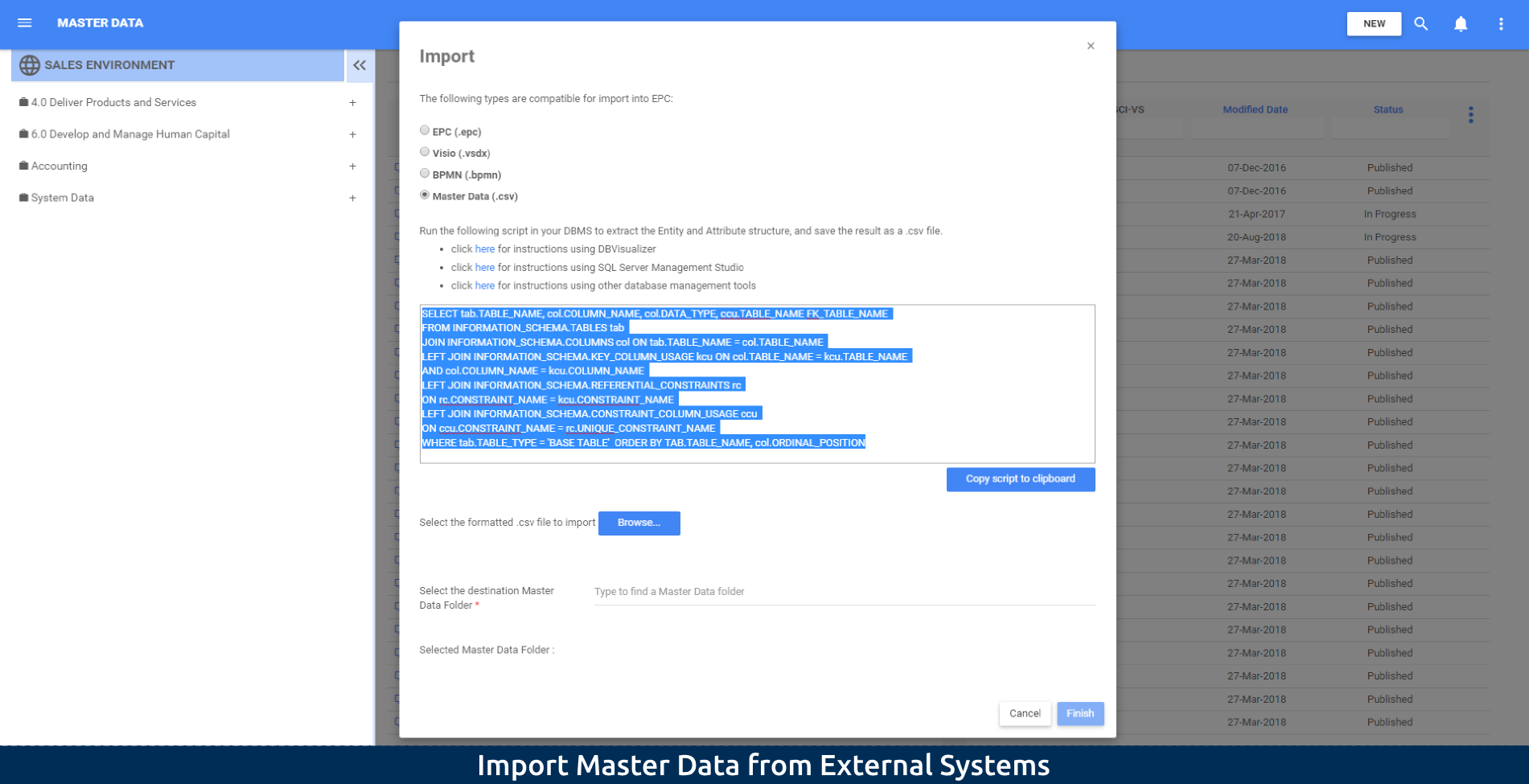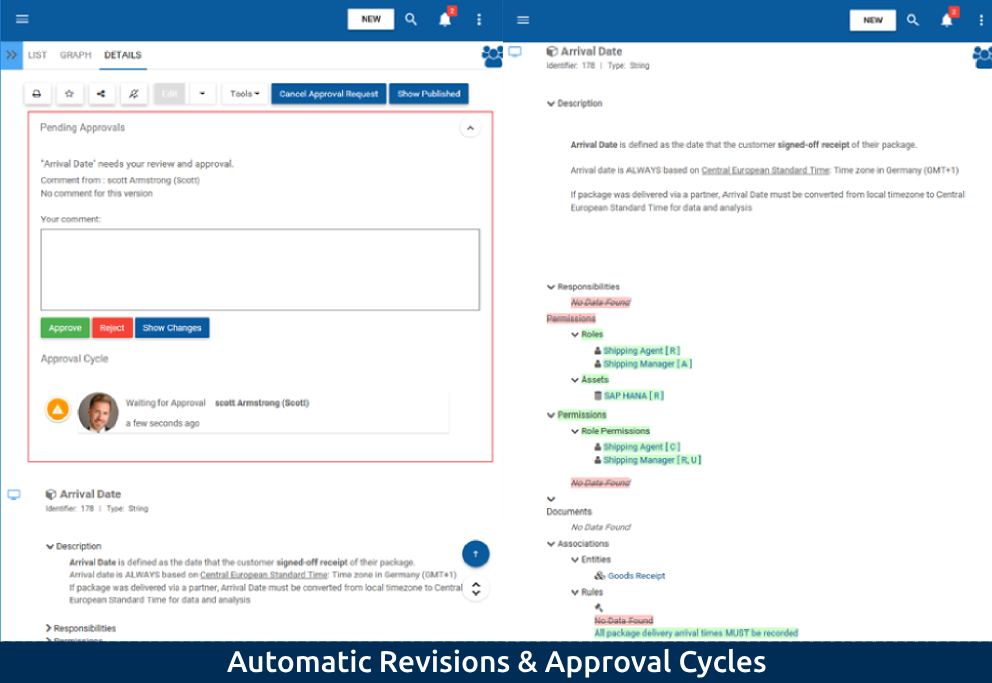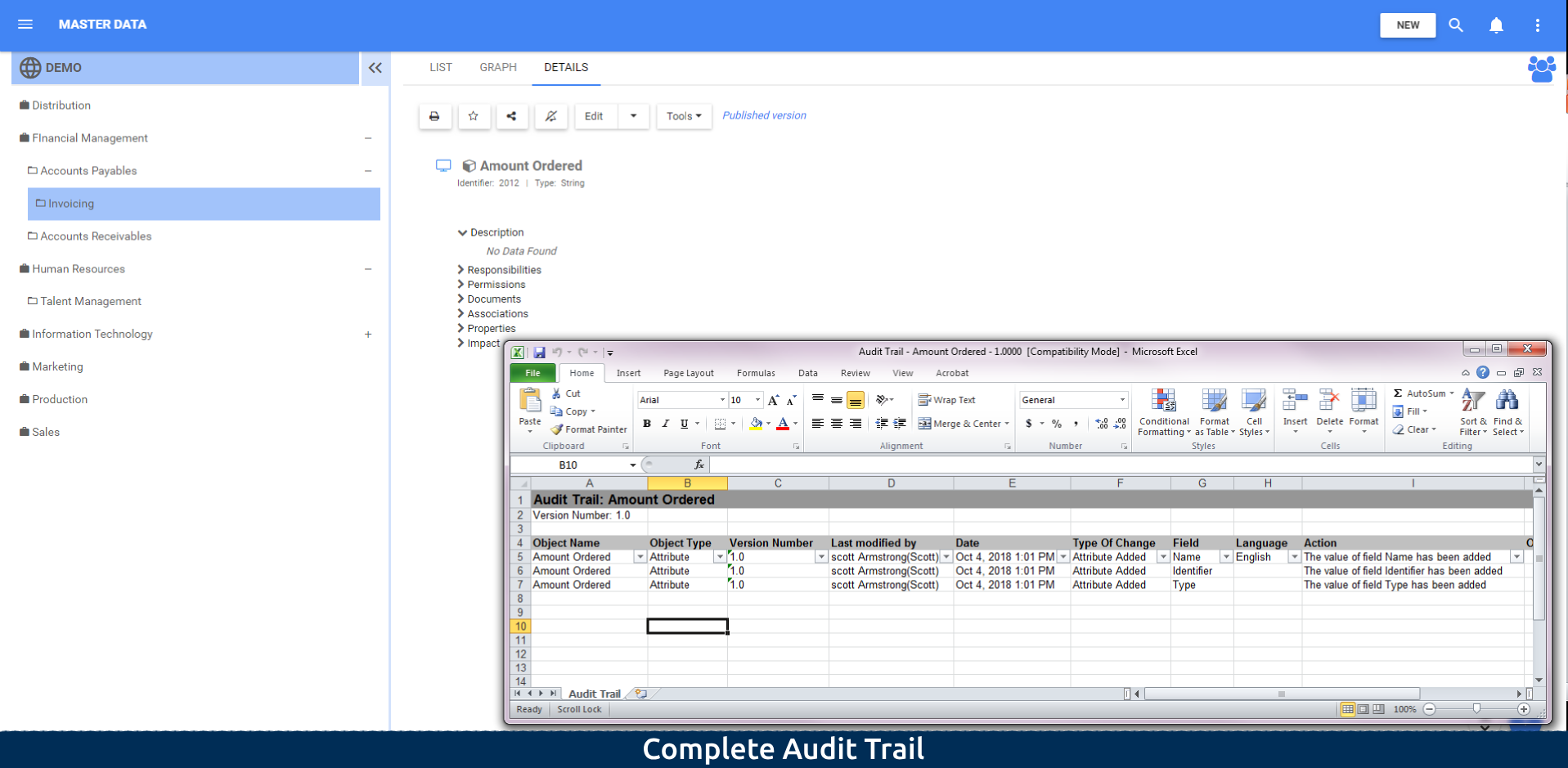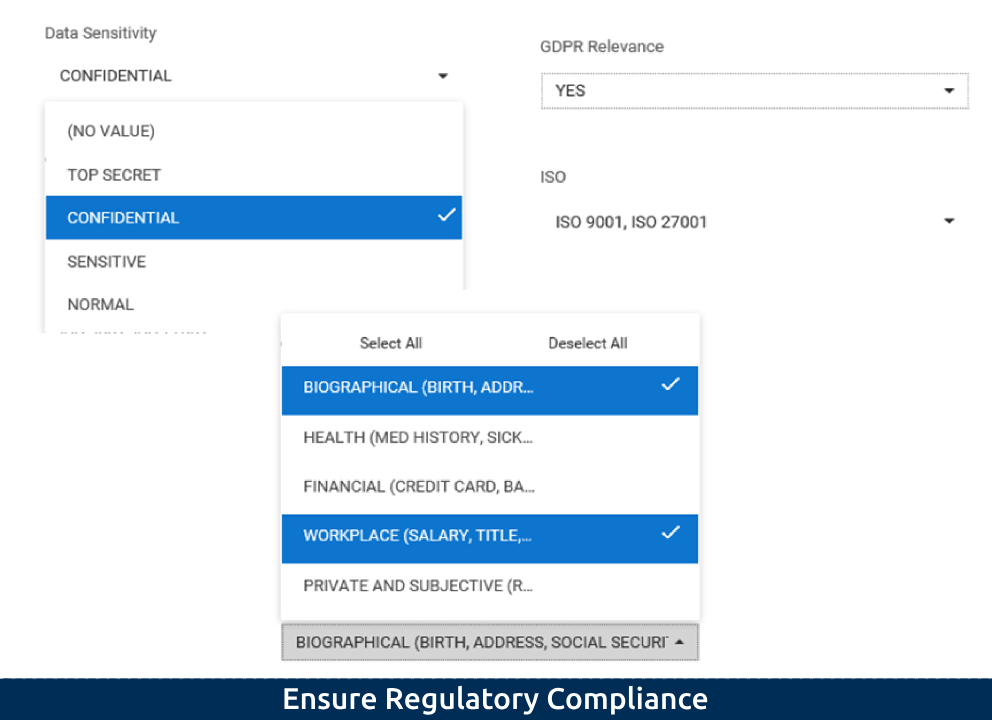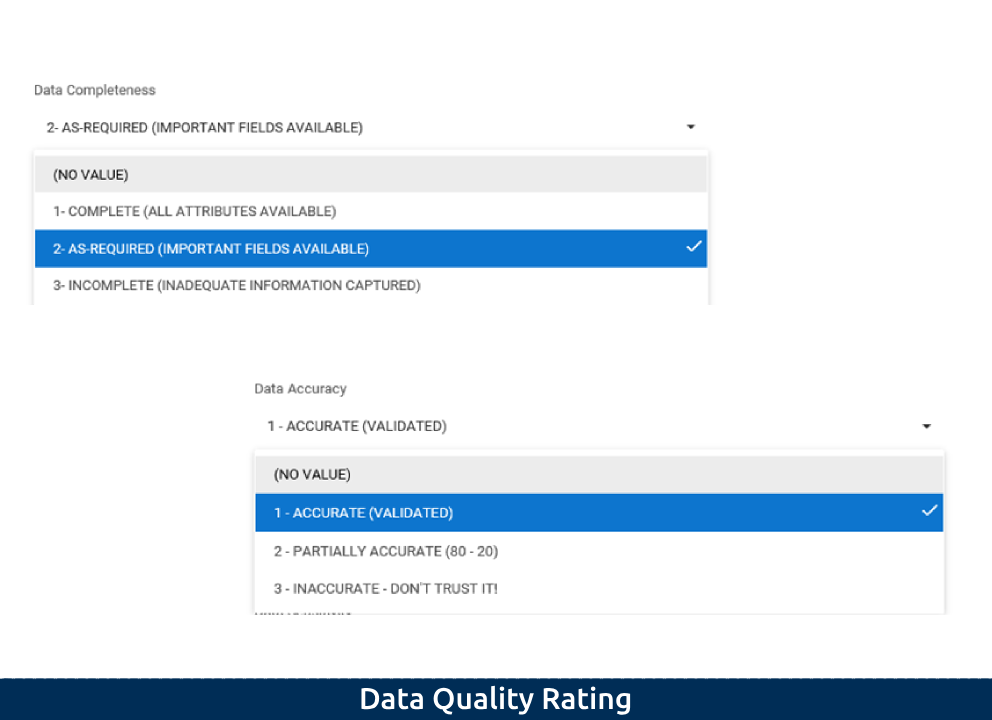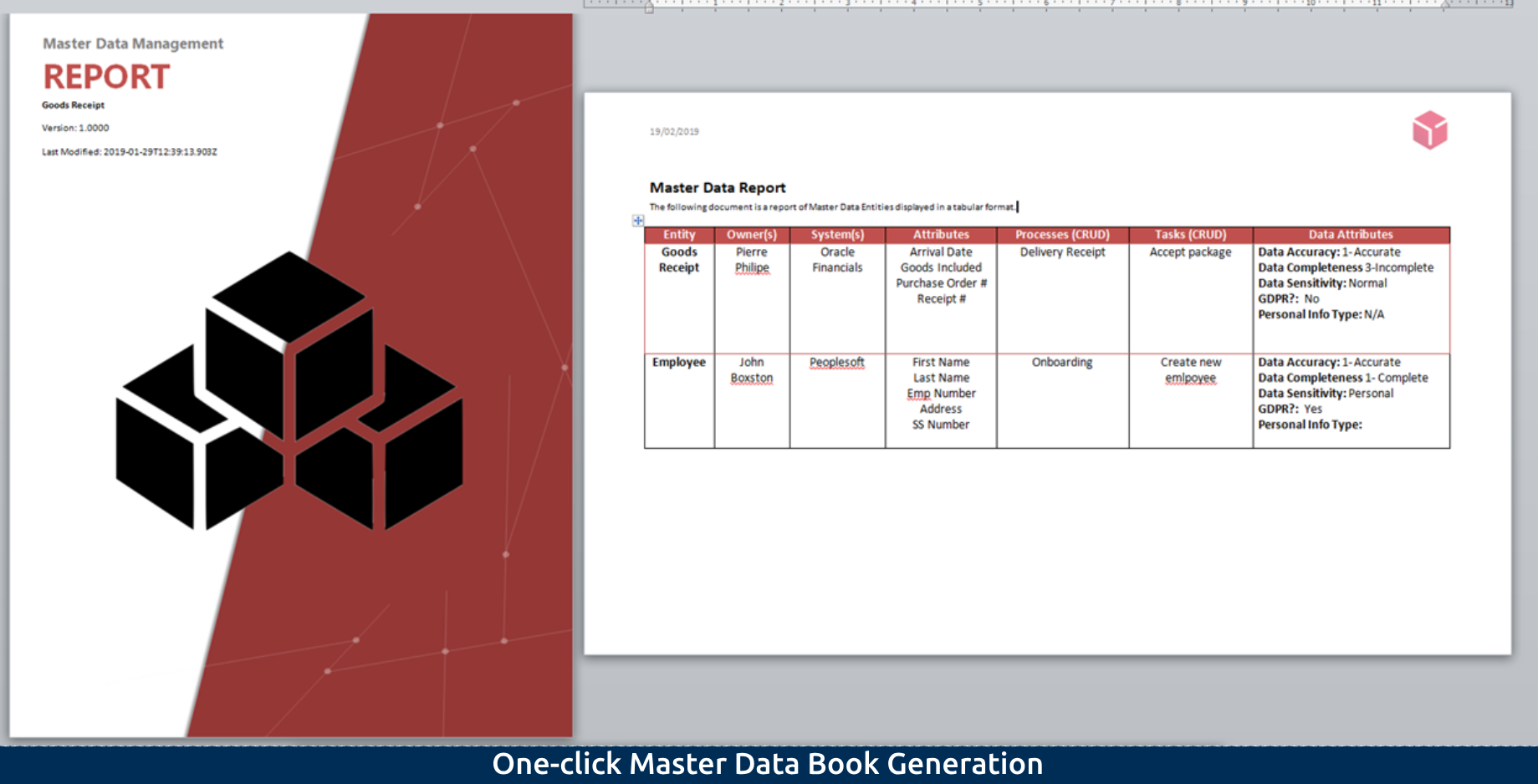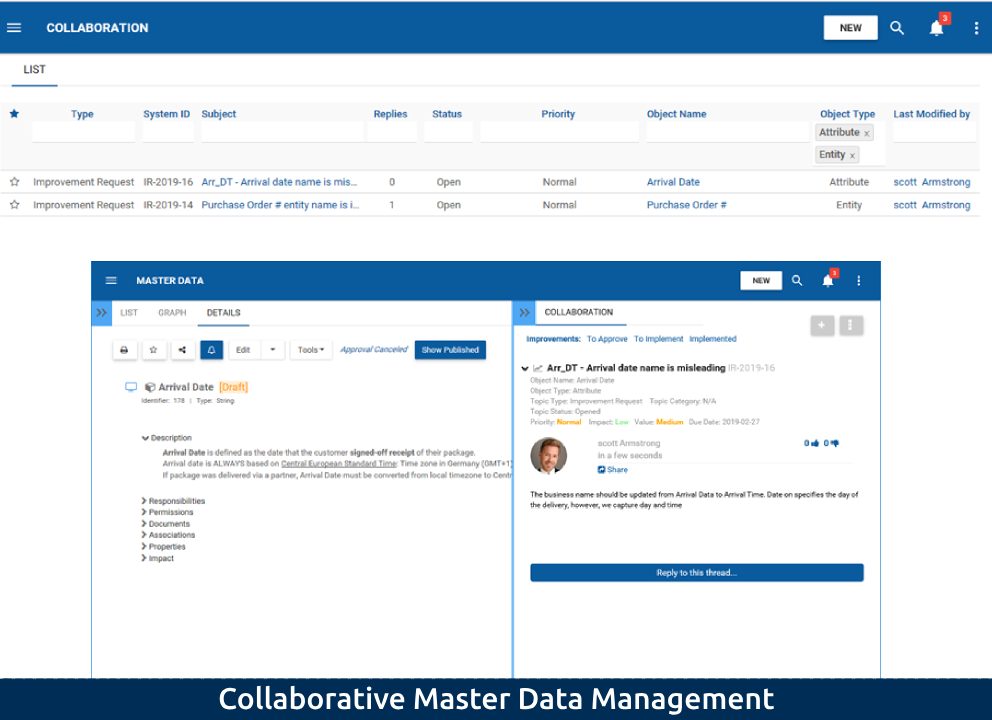Stammdaten & Data Governance

Stammdaten & Data Governance

Master Data Management (MDM) und BPM-Initiativen sollten Hand in Hand gehen, und gemeinsam können sie Organisationen helfen, Geschäftsziele effizienter und effektiver zu erreichen – MDM benötigt organisatorische Zusammenarbeit sowie integrierte prozessorientierte Fähigkeiten, um Informations-Transaktionssilos und Verzögerungen abzubauen.
EPC unterstützt BPM-Projekte dabei, erfolgreich Workflow zu optimieren oder die operationale Effizienz durch präzise, vollständige und rechtzeitige Datenflüsse zu verbessern.
Als zentrales Repository bietet das Enterprise Process Center® (EPC) eine äußerst kollaborative und interaktive Möglichkeit für MDM und BPM, während des gesamten Lebenszyklus der Stammdaten zusammenzuarbeiten – indem es die Struktur der Stammdaten mit menschlichen Aufgaben verbindet, erfasst das EPC alle wichtigen Daten aus jedem Geschäftsprozess und jeder Aktivität und erstellt ein robustes Stammdaten-Asset für Ihre Organisation.
Die MDM-Lösungen von Interfacing gehen über Datenqualität und Datenverwaltung hinaus und bieten die Möglichkeit, eine gemeinsame Wertschöpfung mit BPM zu etablieren und den Wert Ihrer vorhandenen Ressourcen zu maximieren. Lassen Sie uns die Kraft Ihrer Stammdaten nutzen und Ihre Organisation auf dem Weg zum Erfolg begleiten!
Das EPC-Toolkit bietet Organisationen:
Unternehmensdatenkataloge
Volltextsuche zum Abrufen von Daten:
Automatische Metadatenerstellung:
Datenanpassung:
Daten organisieren, auflisten und filtern:
Data Governance & Kontrolle
Eigentümer und Berechtigungen zuweisen:
Visualisieren Sie Datenherkunft und Abhängigkeiten:
Beziehungsdiagramm der Anwendungsdatenbankentität:
Datenprozessausrichtung:
Data Lifecycle Management
Hauptreferenz:
Automatische Überarbeitungen und Genehmigungszyklen:
Vollständiger Audit Trail:
Datensicherheit und Compliance
Gewährleistung der Einhaltung gesetzlicher Vorschriften:
Datenqualitätsbewertung:
Reporting & Analytics:
Zusammenarbeit & Datenkultur
Geschäftsfreundlicher Wortschatz:
Ein-Klick-Stammdatenbuchgenerierung:
Kollaboratives Stammdatenmanagement:
Warum Interfacing?
Wenn Sie weitere Informationen wünschen oder besprechen möchten, wie Interfacing Ihr Unternehmen unterstützen kann, füllen Sie bitte das folgende Formular aus.
Gewinnen Sie Transparenz mit dem Enterprise Process Center®
DieDigital Twin Organization-Software von Interfacing bietet Transparenz und Governance, um Qualität und Effizienz zu verbessern und die Einhaltung gesetzlicher Vorschriften sicherzustellen.
Lesen Sie unsere Blogs
Lesen Sie in unseren Blogs mehr über GXP, Compliance, aktuelle Trends und vieles mehr!
Jetzt kostenlos ausprobieren!
Erfahren Sie, wie das Enterprise Process Center® dazu beitragen kann, Ihre Unternehmenskontrollen, Sicherheit und Compliance schnell und effizient auf Ihre Anforderungen an Master Data & Data Governance vorzubereiten.
